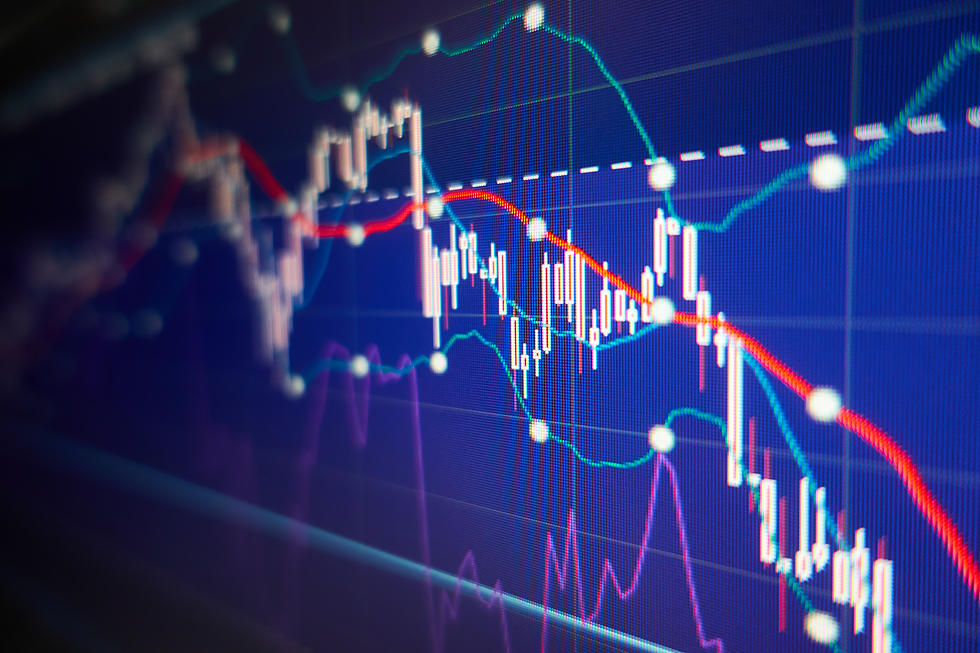![Wall Street Rally to Continue in 2014? [AUDIO]](http://townsquare.media/site/385/files/2014/01/459264623.jpg?w=980&q=75)
Wall Street Rally to Continue in 2014? [AUDIO]
In 2013, the economic recovery didn't start to get revved up until the fall, but earlier in the year, the stock market took off like gang busters, a trend that continues now.
The Standard & Poor's 500 had its best year since 1997 and the Dow Jones Industrial average had its best gain since 1995, up 26.5 percent.
Can the rally continue in 2014?
"Without question the positive trend on Wall Street may carry over into 2014. The fundamentals are still very sound, corporations are increasing their profits. We still could continue to see a lot more legs in this market," said Chris Cordaro, chief investment officer at Regent Atlantic Capital in Morristown.
But investors should expect a correction.
"When you invest in stocks, you're always going to have the possibility of a drawdown on the amount you've invested," said Cordaro. "If we measure historically in any calendar year, on average there's about a 20 percent peak to trough drawdown, so when you're investing in stocks you just have to know that - that's part of the game."
Despite periods of drawdown, investors need to realize the stock market can continue to move upward.
Cordaro also stressed this is not the time to hold cash on the sidelines. "You're not earning any return, and you're actually losing a little bit of purchasing power each year. Make a long-term commitment and then get with it. You haven't missed the boat."
Here are some of the biggest gains and drops in 2013 in the Dow Jones industrial average, and what caused them.
The Biggest Gains:
- Oct. 10: Up 323 points. Markets soar after Republican leaders and President Barack Obama seem willing to end a 10-day standoff over fiscal issues that threaten to leave the U.S. unable to pay its bills.
- Jan. 2: Up 308 points. Stocks start the year off with a bang. Investors are relieved after lawmakers hammer out a last-minute budget deal to avert the "fiscal cliff" of sharp tax hikes and across-the-board spending cuts.
- Dec. 18: Up 293 points. When the Fed finally announces its decision to begin reducing, or "tapering," its bond purchases, investors rejoice, seeing it as a vote of confidence in the U.S. economy.
- June 7: Up 207 points. Investors are encouraged that hiring picked up in May, but not so fast that it might prompt the Fed to move quickly to reduce its economic stimulus. Analysts call the 175,000 job additions a "Goldilocks" number.
- Oct. 16: Up 205 points. A last-minute agreement to keep the U.S. from defaulting on its debt and reopen the government after a 16-day shutdown sends stocks soaring. The deal is reached just hours before a deadline to raise the nation's debt limit.
The Biggest Drops:
- June 20: Down 353 points. The Dow has its worst day of 2013 after the Federal Reserve says it might pare back its economic stimulus program later in the year.
- April 15: Down 265 points. A plunge in commodity prices spills over into the stock market. The price of crude oil sinks to a four-month low, pulling energy stocks lower. Mining companies drop after the price of gold has its biggest one-day fall since 1983.
- Aug. 15: Down 225 points. Investors dump stocks following dour sales forecasts from Wal-Mart and Cisco and on concern that the Fed will soon start withdrawing its support for the economy.
- June 5: Down 217 points. Investors worry about a series of troubling economic reports, including weak hiring at private companies, sluggish factory orders and limited growth in the service sector.
- Feb. 25: Down 216 points. Fears of another flare-up in Europe's debt crisis hit U.S. markets. Results from an election in Italy appear to push the country toward political gridlock, undermining efforts to shore up Italy's finances.
(The Associated Press contributed to this report.)
More From New Jersey 101.5 FM









